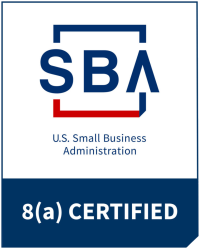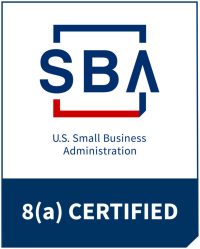Google let the cat out of the bag. They rarely do that, so this change is a big deal.
Google is going to change their Core Web Vitals algorithm in May 2021. Why is that a big deal? It’s a big deal because Google is completely changing the most important measure to RANK YOUR SITE in the search engine results.
What are Core Web Vitals, you ask? Well, they are the 3 core metrics that Google has decided it will use to measure how good your users’ experience is on your site. The metrics are:
- LCP (largest contentful paint), or how long it takes for your site’s biggest content element to become visible
- FID (first input delay), or how long it takes for the browser to respond after a user clicks something on your page
- CLS (cumulative layout shift), or how much your page layout shifts while it’s loading
If your site doesn’t meet or exceed Google’s user experience thresholds on these 3 metrics at least 75% of the time, it will not pass. So it won’t rank.
This will shake up web search as keywords lose their power to user experience.
I think most people would agree that Google’s search engine is the big dog in the park. Its search function not only fetches any internet content imaginable, it also delivers content that Google’s algorithm predicts users will like best. The algorithm includes thousands of different factors that determine whether or not your website pages come up in an individual’s search results. Pleasing Google’s algorithm is the difference between bringing in customers or being buried at the bottom of a list of millions of other sites. This nearly trillion dollar search engine tweaks it’s algorithm more than 400 times per year on average and cannot be easily tricked.
Google must be convinced that a site is legitimate based on how its pages will appeal to a user. (Keep in mind, Google ranks pages and not websites). Their new Core Web Vitals sealed the deal on that, measuring a website’s legitimacy no longer based heavily on content, but now based on usability. Key words and other factors will still count as to how people search, but not as the thing that walks the dog. And, unlike previous changes which have usually impacted only 10-15% of websites, this massive overhaul will affect every website.
COVID19 and Google’s Gift to Businesses
Normally Google doesn’t tell anyone exactly what changes they’re making, and many times they won’t even announce a change even after it’s done. It’s a moving target, and keeping sites ranked depends on quickly catching changes and shifting your website strategy in accord.
So why did they announce this change?
The Covid-19 pandemic resulted in a massive business shift toward digital platforms. To alleviate the strain, Google broke its longtime practice of secrecy and released information about major upcoming updates over six months in advance. Their announcement gives webmasters and business owners the details and extra time they need to adapt their sites and pages and avoid being buried in search results when the update goes live.
What’s Coming in 2021
Core Web Vitals (User Experience) is set to be implemented in May 2021. Google is aware that its current ranking system allows larger, name-recognized companies to bully smaller companies out of search results despite having lower quality pages because currently, Google’s big fish criteria are brand strength and backlinks. That may not sound like a big deal, but it means the difference between a business funnel full of incoming clients, or a dried up well. Putting emphasis on user experience will level the playing field for local searches.
User experience is not new. It certainly has been a factor in Google’s ranking algorithm before now. For instance, since 2015 and the rise of mobile internet usage, Google’s algorithm has penalized sites that don’t produce mobile friendly experiences, as well as those that users quickly click away from.
But now, utilizing new technology added to their RankBrainTM engine, Google is making user experience a clear priority. This levels the playing field for smaller businesses that just don’t have comparable brand strength. Small businesses need only align their websites to Google’s user experience expectations to show up higher in rankings and in your target clients’ sights.
What does this mean for YOUR website?
This update is far more encompassing than any other, and outweighs keywords, backlinks, brand recognition, or any other traditional search engine optimization tools. Google is reshaping the way the Internet operates, forcing brands to attend to their customers’ experience and satisfaction. Websites will need to be responsive and answer consumer’s questions, and not just be a ‘Who we are” brochure.
Expect this algorithm to include ranking hits based on:
- Page and graphic element loading speed
- How quickly the page responds after a user has clicked something
- Whether or not the layout shifts frequently when loading (which could cause users to click on things they didn’t intend)
- Intrusive interstitials (no more badly coded pop-ups!)
…to name a few.
Source: Google Webmaster Blog
The full posting about the update can be found here.
So What Do You Need to Know Now?
What you need to know is that you can assess your site to see if it meets the thresholds for each of the 3 Core Web Vitals metrics. In fact, Google will include these metrics in all its popular tools that tell you how your site measures up. That means you’ll be able to see your site’s performance without adding new analytics to your pages.
You also need to know that these tools won’t give you the details you’ll need if your site doesn’t meet the 75th percentile for all 3 core metrics. To do that, we encourage you to work with your webmaster to accurately diagnose and remediate issues so that your site is ready by the time May 2021 rolls around.
Finally, since most websites don’t meet the thresholds, the majority of websites will need to be modified. You need to know that means webmasters will be busy, especially as we get closer to Google’s date to launch the change. Make plans now to assess your site, and leave plenty of time to make changes if needed. This algorithm change is a great opportunity for small businesses to jump to the front of the pack!




